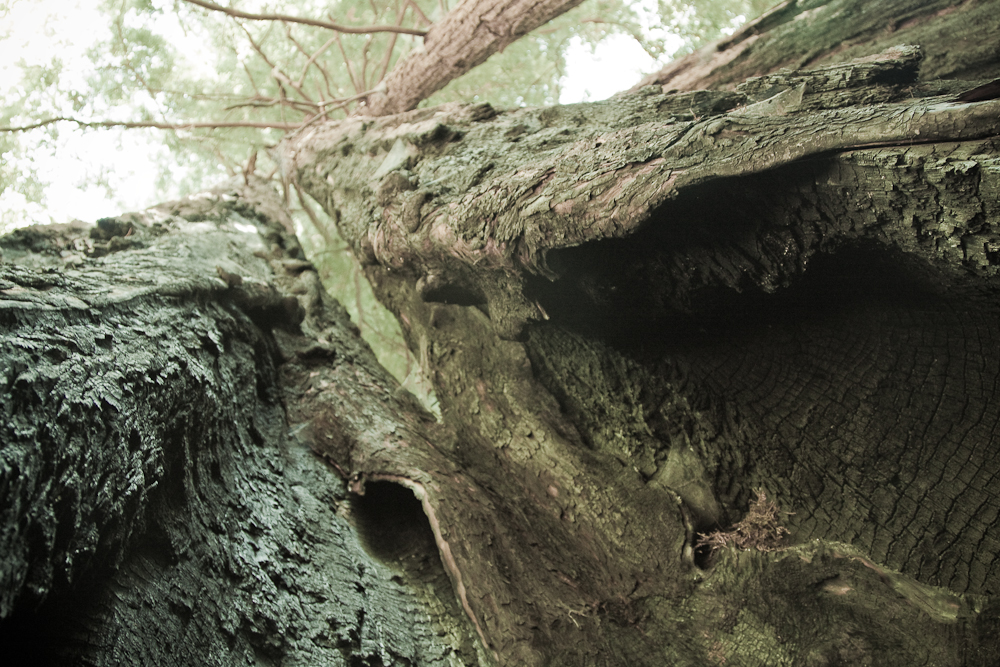

Big Basin Redwoods State Park is a state park in the U.S. state of California, located in Santa Cruz County about 36 km (23 miles) northwest of Santa Cruz. The park contains almost all of the Waddell Creek watershed, which was formed by the seismic uplift of its rim and the erosion of its center by the many streams in its bowl-like depression.
Big Basin is California’s first State Park, established in 1902. Its original 3,800 acres (15 km2) have been increased over the years to over 18,000 acres (73 km2). It is part of the Northern California coastal forests ecoregion and is home to the largest continuous stand of ancient Coast Redwoods south of San Francisco. It contains 10,800 acres (44 km2) of old-growth forest as well as recovering redwood forest, with mixed conifer, oaks, chaparral and riparian habitats. Elevations in the park vary from sea level to over 600 m (2,000 ft). The climate ranges from foggy and damp near the ocean to sunny, warm ridge tops.
The park has over 130 km (80 miles) of trails. Some of these trails link Big Basin to Castle Rock State Park and the eastern reaches of the Santa Cruz range. The Skyline-to-the-Sea Trail threads its way through the park along Waddell Creek to Waddell Beach and the adjacent Theodore J. Hoover Natural Preserve, a freshwater marsh.
The park has a large number of waterfalls, a wide variety of environments (from lush canyon bottoms to sparse chaparral-covered slopes, many animals (deer, raccoons, an occasional bobcat) and abundant bird life – including Steller’s Jays, egrets, herons and Acorn Woodpeckers.
Although redwoods dominate the landscape, many other plant species are common in Big Basin. One will certainly see Coast Douglas-fir, tan oak, Pacific madrone, Pacific Wax Myrtle, trees in the park. Competing for sunshine are also many shrubs such as Red Huckleberries, western azalea, and many varieties of ferns. Spring and summer bring the wildflowers: redwood sorrel, salal, redwood violets, trillium, star lily and mountain iris. The rains of fall and winter deliver hundreds of kinds of fungi in a startling variety of shapes, sizes and colors.
Upon climbing to higher elevations, one will find the forest growing thinner, as redwoods are replaced by more drought-tolerant species. The higher, drier ridges and slopes of Big Basin are typically full of chaparral vegetation: Knobcone Pines, chinquapin and buckeye create the canopy, with ceanothus, manzanita, chamise, and chaparral pea growing dense and low. Adding a splash of color are wildflowers such as Indian paintbrush, monkey flower, bush poppies and yerba santa.
Near the mouth of Waddell Creek is the Theodore J. Hoover Natural Preserve, a freshwater marsh that is rare because it has been relatively undisturbed. This special place provides habitat for a wide variety of birds, reptiles and amphibians. The nearby Rancho Del Oso Nature and History Center interprets the cultural and natural history of the area.
A wide variety of animals live within Big Basin, many of which can be seen by visitors.
Amongst mammals, California Black Bear, Black-tailed Deer, Western Gray Squirrels, chipmunks and raccoons are common, but foxes, coyotes, bobcats, and opossums are also present. Cougars are known to live in the park but are extremely rare. Grizzly bears are extinct in California, but were numerous in the past.
Bird life is abundant throughout the park. Steller’s Jays and Acorn Woodpeckers are both seen and heard, and the Dark-eyed Junco is widespread. Less obvious are the Brown Creeper, Anna’s Hummingbird, Northern Flicker, Olive-sided Flycatcher and Sharp-shinned Hawk. The first Marbled Murrelet nest ever sighted was located in Big Basin not far from the park headquarters. These robin-sized seabirds nest high in the oldest Coast Douglas-fir and redwoods to feed their young. They can be seen or heard at dawn and dusk, high above the forest canopy.
Many reptiles are also present, but aside from the ubiquitous Coast Range subspecies of the Western Fence Lizard (Sceloporus occidentalis bocourtii), most are rarely seen due to their shy behavior. The only dangerous reptile in the park is the Pacific Rattlesnake (Crotalus oreganus), found almost exclusively in the high, dry chaparral.
The damp, shady woodland floor is home to a variety of amphibians. Commonly seen species include the California Newt (Taricha torosa torosa), Pacific Tree Frog (Pseudacris regilla), and Arboreal Salamander (Aneides lugubris). Less commonly seen are the Black Salamander (Aneides flavipunctatus) and California Giant Salamander (Dicamptodon ensatus) and the endangered California Red-legged Frog (Rana draytonii). Particularly intriguing are banana slugs (Ariolimax spp.), which can reach 6 inches long.
California Sisters (Adelpha bredowii) are prominent butterfly denizens, fluttering high in the canopies above the trails.
Big Basin can be approached from the east, through redwood forest and coastal mountains, or from the coast, along State Route 1. The eastern route, over State Route 9 through Saratoga and smaller towns like Boulder Creek is more popular because of the famous trees. This route passes Castle Rock State Park (California) on the eastern side of the Santa Cruz range.
From SR 1, Gazos Creek road offers a pleasant fire-road route for mountain bikes (road closed to motor vehicles), which can then descend into the headquarters area or turn off on Johansen fire road to join China Grade above its intersection with State Route 236.
The park is about an hour and a half south of San Francisco, or five hours north of Los Angeles.
Quoted from wikipedia.com